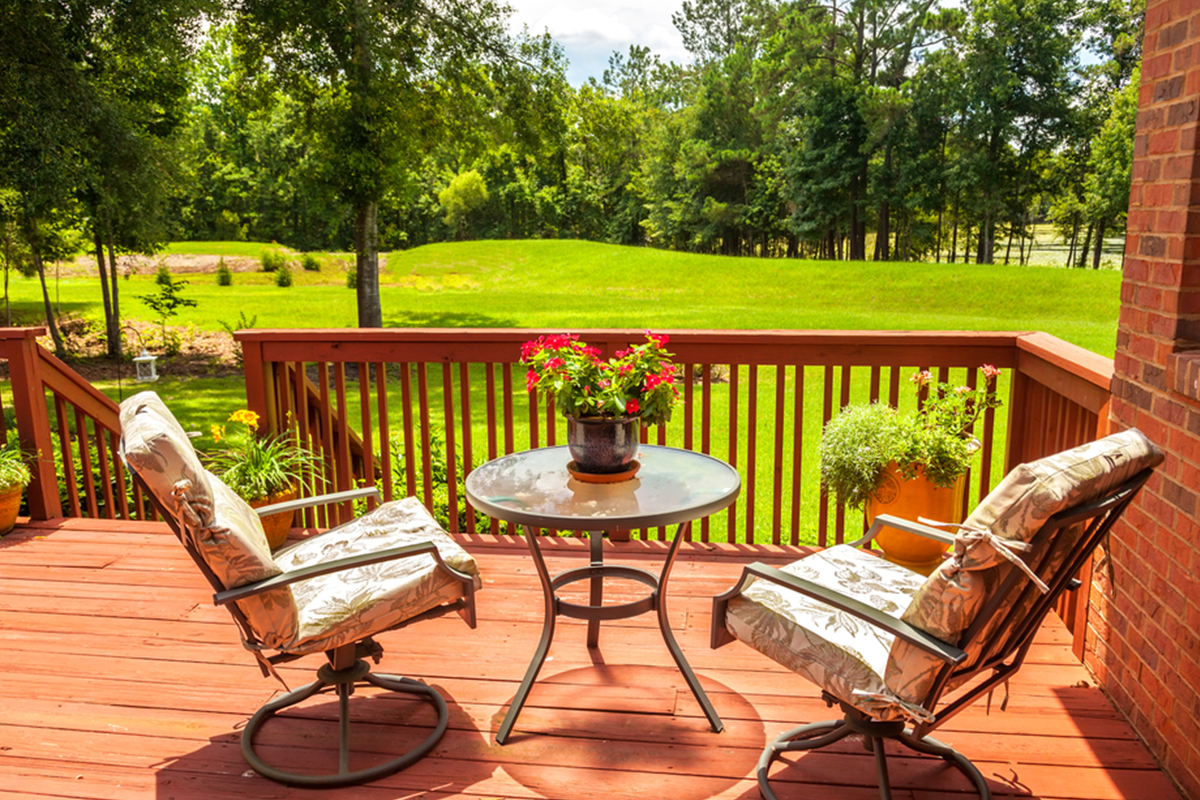
Spring is in full swing, and more than likely, so is the use of your deck. May is Deck Safety Month – a perfect time for homeowners to check their decks for common safety hazards. Check out:
Stairs and Railings
Stairs and railings should be secure and not wiggle. Railings must be properly attached to both the deck framing and deck surface. Railings must be at least 36″ high (some areas require 42″ height – check your local building codes) with rails no more than 4″ apart. If the area behind the stair tread is open, the opening should be no more than 4″ high. Keep the stair pathway clear to prevent a tripping hazard.
Flashing
Check for a metal or plastic guard that directs water away from sensitive areas like the sill of an exterior door. If water gets under the flashing, the wood can rot and weaken the deck’s foundation.
Split or Decaying Wood
Check several areas, including the ledger board (where the deck attaches to the house), support posts, and joists. Use a screwdriver to penetrate the wood surface. If you can easily penetrate 1/4″ to 1/2″ or the wood is soft and spongy, decay may be present.
Ledger Board
For a strong connection, a ledger needs 1/2″ x 3″ lag screws (or lag bolts if you have access from the inside to fasten the washers and nuts) driven every 16 in.
Pest Infestation
Walk the surface and check for small boreholes, which may indicate insect infestation. Other signs include the presence of a powder resembling fine sawdust, wood shavings, or merely seeing termites in swarms around your home.
Footings and Support Posts
Examine the footings and support posts for loose connections, inferior fasteners (ie nails instead of bolts), pooling water, and signs of decay.
Water Hazards
Check for water from sprinklers, downspouts, or hoses that discharge near support posts. Rot can occur in any wood regularly exposed to water.
Consider a Professional Inspection
As a general rule, a standard deck’s lifespan is around 15 to 20 years. Remember, your deck is constantly exposed to rain, wind, sun, and foot traffic. This exposure can create wear and tear on even the most quality-built deck. Professional Inspections can begin at less than a hundred dollars to several hundred dollars depending upon the length of the inspection.
Be proactive in keeping one of your family’s favorite gathering spots safe and sound. Now that you’ve checked your deck and addressed any problems, it’s time to relax and watch your family enjoy this extension of your home. So, grab a cold one, a lounge chair, and a slice of shade. Your work here is done – until someone says, “let’s barbecue.”
